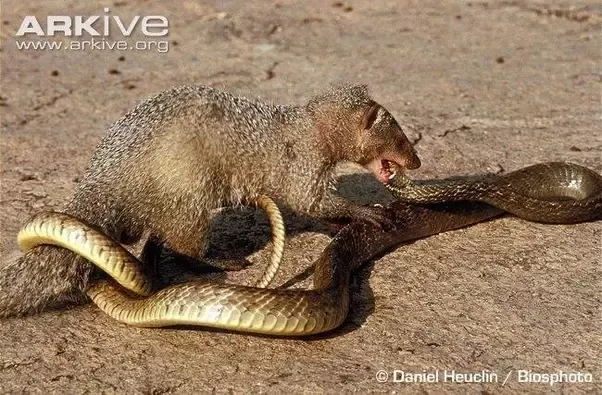
What Animals Eat Snakes?
Snakes are fascinating creatures that play a crucial role in the ecosystem. However, they are not at the top of the food chain and have numerous predators. Understanding which animals eat snakes can provide insight into the balance of nature and the complex relationships within ecosystems. This article explores various predators that consume snakes, their hunting techniques, and the ecological significance of these interactions.
1. Birds of Prey
Birds of prey are among the most skilled hunters of snakes. Their keen eyesight and powerful talons make them formidable predators. Here are some notable examples:
- Eagles: Many species of eagles, such as the bald eagle and the golden eagle, are known to hunt snakes. They can spot snakes from great heights and swoop down to capture them.
- Hawks: Various hawk species, including the red-tailed hawk, also prey on snakes. They use their sharp talons to grasp and kill their prey.
- Owls: Nocturnal hunters like the great horned owl are adept at catching snakes during the night. Their silent flight allows them to approach snakes without being detected.
- Secretary Birds: These unique birds are known for their ability to kill snakes by stomping on them. They have long legs and a remarkable agility that makes them effective snake hunters.
- Roadrunners: These fast-running birds chase down and kill snakes, often striking them on the head or bashing them against rocks.
2. Mammals
Several mammals are also known to eat snakes, utilizing their agility, strength, or venom resistance to hunt these reptiles:
- Mongooses: Known for their ability to take on venomous snakes, mongooses have specialized receptors that provide some immunity to snake venom. Their agility allows them to dodge strikes and quickly retaliate.
- Honey Badgers: These fearless animals are notorious for their ability to confront and eat snakes, including venomous species. Their thick skin provides some protection against bites.
- Wolverines: Wolverines are powerful predators that will eat snakes among other prey. They are known for their strength and tenacity in hunting.
- Raccoons: Opportunistic feeders, raccoons will eat snakes when the opportunity arises, especially in areas where snakes are abundant.
- Large Cats: Big cats like leopards and jaguars occasionally hunt snakes as part of their varied diet. Their stealth and strength make them effective hunters.
3. Reptiles
Some reptiles are known to consume snakes, including other snakes:
- Kingsnakes: These non-venomous snakes are known for their cannibalistic behavior, often preying on other snake species, including rattlesnakes.
- Monitor Lizards: Large monitor lizards, such as the Komodo dragon, will eat snakes when they encounter them. Their size and strength allow them to overpower snakes effectively.
4. Amphibians and Other Creatures
While less common, some amphibians and other creatures may also prey on snakes:
- Dolphins: Interestingly, trained dolphins have been observed hunting and consuming sea snakes. They can handle the venom and have been recorded eating multiple snakes in a single session.
- Hedgehogs: These small mammals can consume snakes, particularly smaller species. Their resistance to certain toxins allows them to eat a variety of prey.
Ecological Significance
The predation of snakes by various animals plays a vital role in maintaining ecological balance. By controlling snake populations, these predators help prevent overpopulation, which can lead to a decline in other species. Additionally, the interactions between snakes and their predators contribute to the complexity of food webs in ecosystems.
Table: Predators of Snakes
| Rank | Animal Name | Type | Hunting Method |
|---|---|---|---|
| 1 | Eagle | Bird of Prey | Swoops down to capture snakes |
| 2 | Mongoose | Mammal | Dodges strikes and retaliates quickly |
| 3 | Kingsnake | Reptile | Cannibalistic, preys on other snakes |
| 4 | Honey Badger | Mammal | Confronts and eats snakes, resistant to venom |
| 5 | Roadrunner | Bird | Chases and bashes snakes against hard surfaces |
| 6 | Wolverine | Mammal | Strong predator, hunts snakes among other prey |
| 7 | Monitor Lizard | Reptile | Uses strength to overpower snakes |
| 8 | Secretary Bird | Bird | Stomps on snakes to kill them |
| 9 | Raccoon | Mammal | Opportunistically eats snakes |
| 10 | Great Horned Owl | Bird of Prey | Hunts snakes at night with silent flight |
FAQ
What animals are known to eat snakes?
Many animals eat snakes, including various birds of prey (eagles, hawks, owls), mammals (mongooses, honey badgers, raccoons), and even some reptiles (kingsnakes, monitor lizards).
Are there any animals that are immune to snake venom?
Yes, some animals, like mongooses and honey badgers, have developed resistance to certain snake venoms, allowing them to hunt and consume venomous snakes safely.
Do snakes eat other snakes?
Yes, many snake species, including kingsnakes, are cannibalistic and will eat other snakes as part of their diet.
How do birds catch snakes?
Birds of prey use their keen eyesight to spot snakes from a distance and swoop down to catch them with their sharp talons. Some birds, like secretary birds, may stomp on snakes to kill them.
What role do snake predators play in the ecosystem?
Snake predators help control snake populations, preventing overpopulation and maintaining the balance of the ecosystem. Their predation also contributes to the complexity of food webs.
Can domestic cats eat snakes?
While not a primary food source, some domestic and feral cats may hunt and consume smaller snakes if they encounter them.
What is ophiophagy?
Ophiophagy refers to the feeding behavior of animals that specialize in hunting and consuming snakes. This behavior is observed in various species, including mongooses and certain birds of prey.
Are there any notable adaptations in animals that eat snakes?
Many snake-eating animals have developed unique adaptations, such as resistance to venom, agility, and specialized hunting techniques, allowing them to effectively hunt and consume snakes.
How do dolphins hunt snakes?
Trained dolphins have been observed hunting sea snakes, using their intelligence and agility to catch and consume them without suffering from the venom.
What is the greatest threat to snakes?
The greatest threats to snakes include habitat loss, human activity, and predation from various animals. Humans are also significant predators of snakes, often killing them out of fear or misunderstanding.For more detailed information, you can refer to the Wikipedia page on Ophiophagy.


